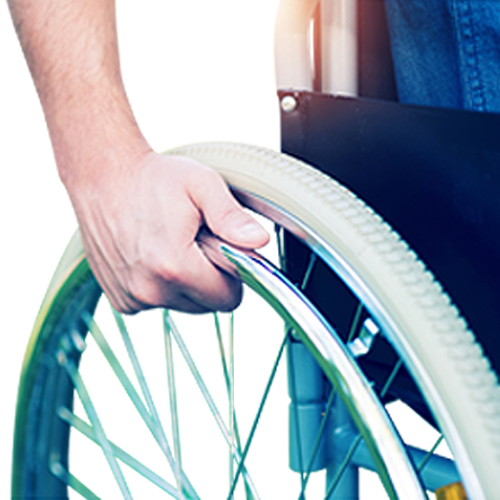Amyotrophic lateral sclerosis, also known as ALS, is a relatively unknown degenerative disorder. Here is some information about it.
What is ALS?
You have probably already heard of ALS, possibly under a different name. The disease goes by several names, including amyotrophic lateral sclerosis, motoneuron disease or Lou Gehrig’s disease. The latter name comes from a famous American baseball player who died of the disease in the 1940s. ALS was first described in 1874 by a French neurologist named Jean-Martin Charcot. In France, the disease is also known as Charcot’s disease.
ALS is a neuromuscular disease characterized by the deterioration of certain nerve cells in the brain and spinal cord. This neurological impairment progressively hinders the brain’s ability to control voluntary muscular movements. This gradually leads to paralysis and muscle atrophy (or wasting).
In Canada, ALS currently affects between 2500 and 3000 people over the age of 18. It can strike anyone at any age, most often between the ages of 40 and 70. It is not contagious and cannot be transmitted from one person to another. However, there is a hereditary form of the disease, which occurs in about 5 to 10% of cases.
What causes the disease?
ALS is a complex disease for which the exact causes are not yet known, although in some cases there is a genetic predisposition to the condition. Several hypotheses have been put forward to explain the destruction of the nerve cells, including exposure to certain environmental factors. Nevertheless, the causes of the disease remain unknown.
What are the signs and symptoms of ALS?
There is more than one variant of ALS. As a result, the disease does not initially affect the same areas of the body from person to person. In some cases, it may first affect the nerves that control the muscles of the upper limbs, while in other cases, it may affect the lower limbs, throat or chest. The disease may go unnoticed at first or be confused with other health problems or signs of aging. Symptoms of the disease include:
- fatigue
- muscle weakness
- weight loss
- muscle stiffness
- decreased muscle tone
- cramps
- muscle twitching
- difficulty swallowing
- difficulty speaking
How does the disease progress?
As the disease progresses, more muscles and areas of the body are affected. The paralysis progresses and the muscles slowly weaken. The disease will also affect the respiratory muscles. However, taste, smell, touch, sight and hearing remain intact. The order in which the muscles are affected and the speed at which the disease progresses vary from one person to another.
Are there any treatments?
Our understanding of the disease has advanced greatly in recent years and a lot of research is being done to help people with ALS. Researchers are working to find a treatment that will reverse the disease. However, there is no cure at this time. Available treatments are aimed at ensuring the comfort of people with the disease to improve their quality of life and that of their loved ones. Only one drug is currently used to slow the progression of the disease, but its effects are modest.
What are the available resources?
There are several clinics in Canada that specialize in the care of people with ALS and provide services to their families. Various healthcare professionals work together to improve the quality of life of the people affected by ALS and that of their families. The ALS Society of Canada and the ALS Society of Quebec also offer several frontline, support, and orientation services. If you or a loved one has ALS:
- Learn about the disease and the care options.
- Surround yourself with people with whom you can share your feelings and emotions. It’s important to develop a support network.
- Get help. There are clinics and community services that can help you through each stage of the disease.
While living with ALS is challenging, the future is bright for all those waiting for a cure. Until then, there are many healthcare professionals, organizations, and people living with ALS who are available to offer their help and support.

